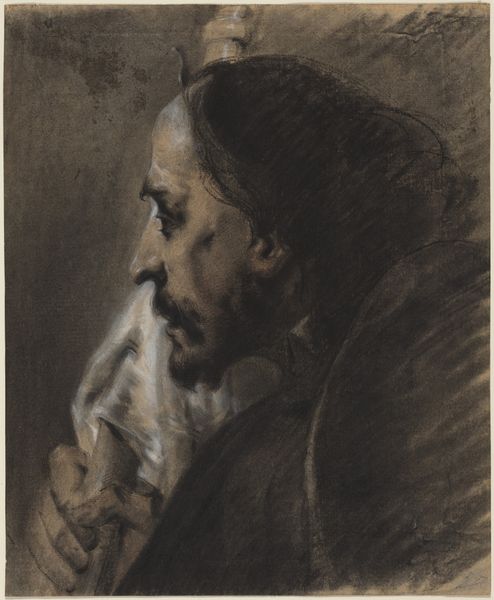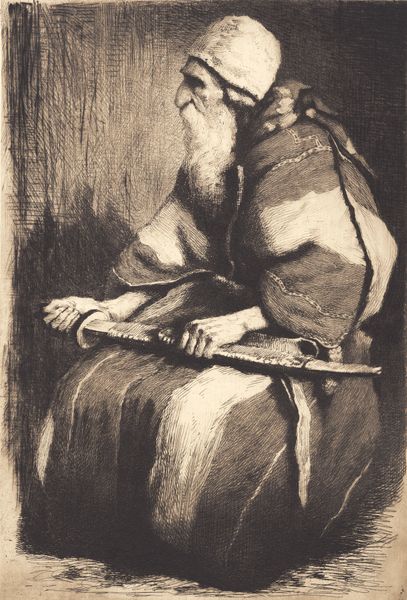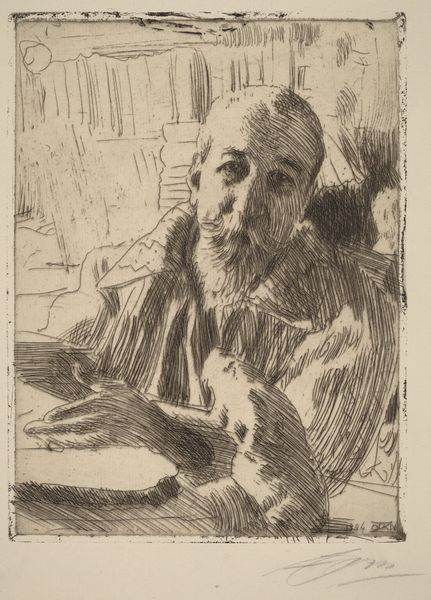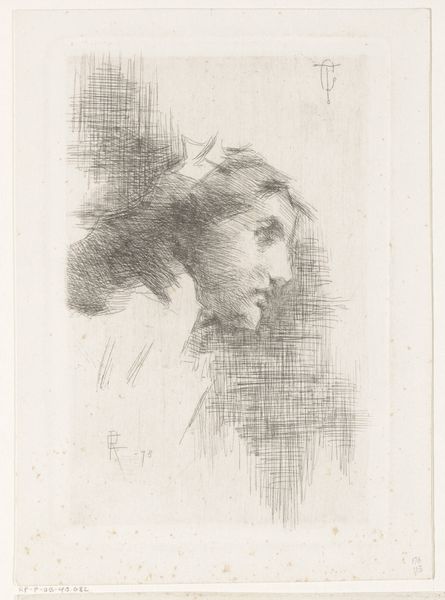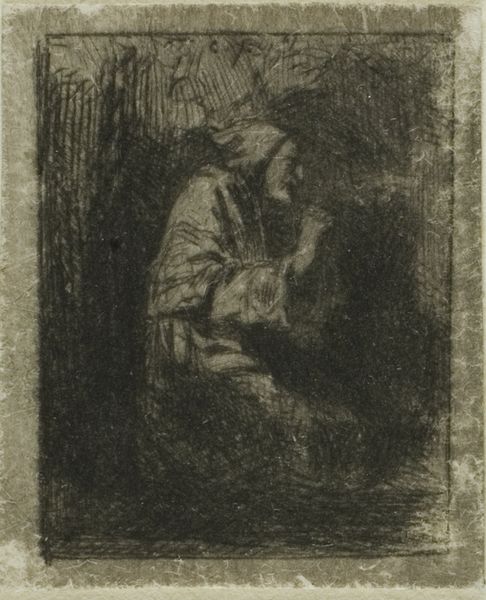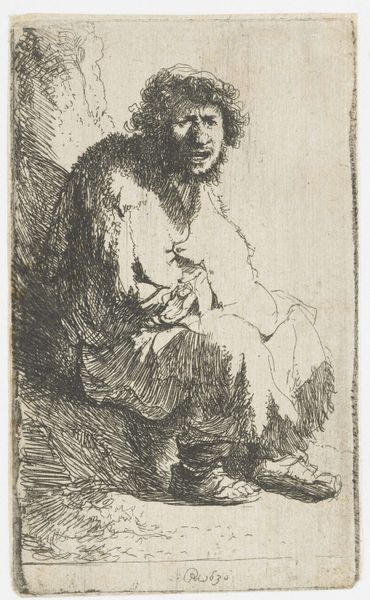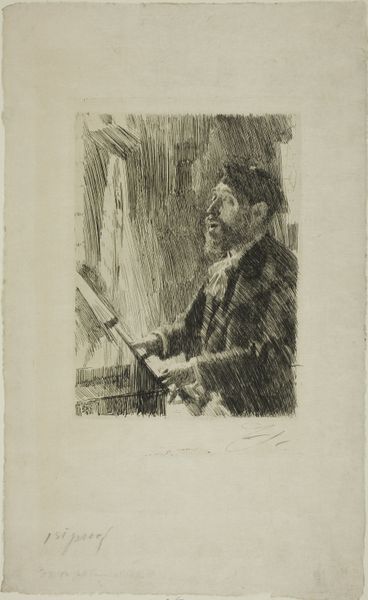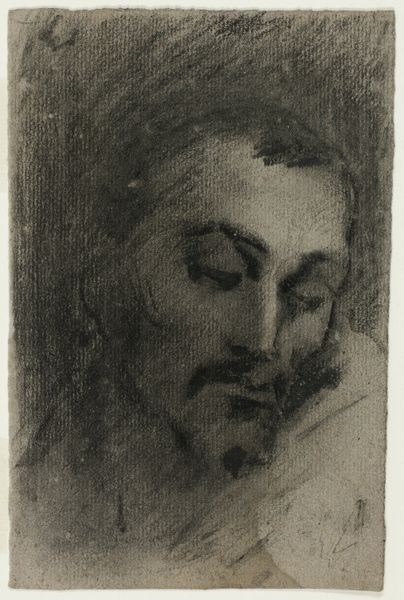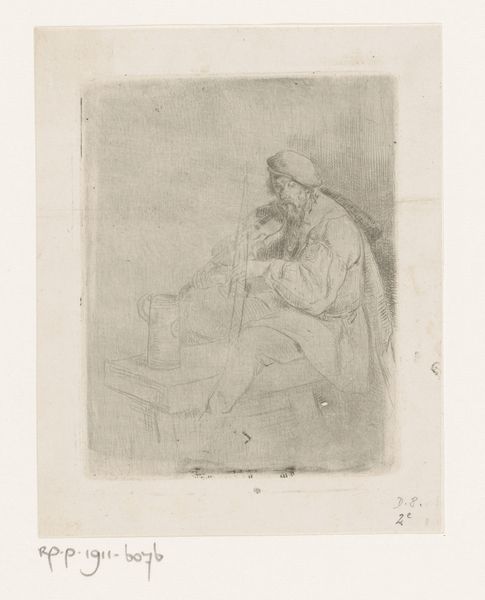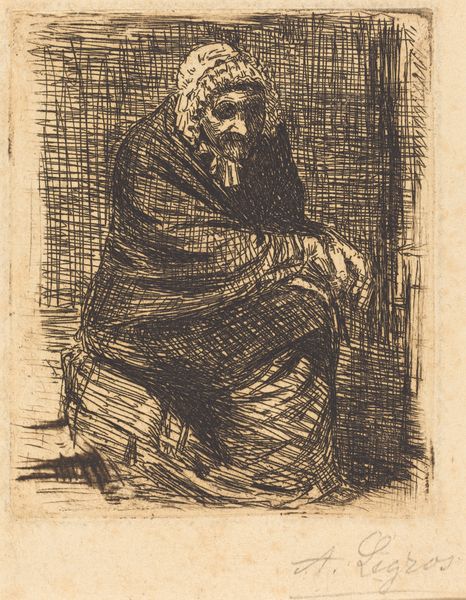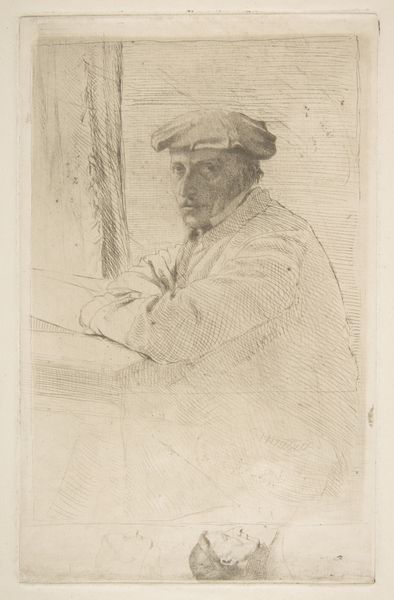
drawing, print, etching
#
portrait
#
pencil drawn
#
drawing
# print
#
etching
#
charcoal drawing
#
pencil drawing
#
portrait drawing
#
realism
Dimensions: 200 mm (height) x 165 mm (width) (plademaal)
Frans Schwartz created this etching of an old shepherd playing the bagpipes sometime before 1917. The printmaking process is central to understanding the image. With etching, the artist draws into a waxy ground on a metal plate, which is then bathed in acid. The acid bites away the exposed lines, which are then inked and printed. Consider the marks on the plate here: the fine hatching suggesting shadow, and the deeper, more confident lines defining the shepherd’s face. This way of working allowed Schwartz to create an image that feels both immediate and carefully considered. Beyond this, etching has a social history. It was a relatively accessible medium, capable of producing multiple images. This aligns with the rise of a middle-class art market and the changing status of artists in the late 19th century. It also speaks to the wider social context: as with so many images of rural life from this period, we might wonder whether this shepherd is idealized, his labor softened for urban consumption. Ultimately, considering the materials and the making of this print helps us to understand its historical and social significance.
Comments
No comments
Be the first to comment and join the conversation on the ultimate creative platform.
